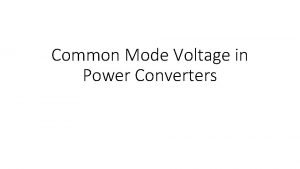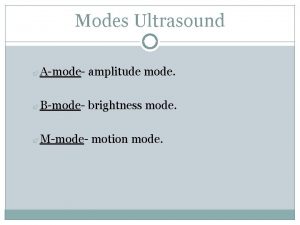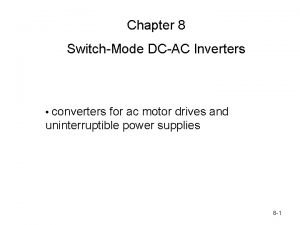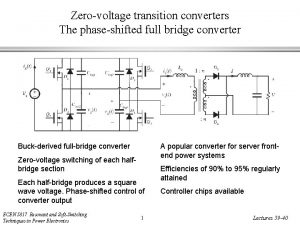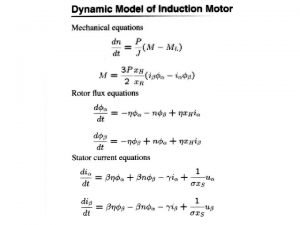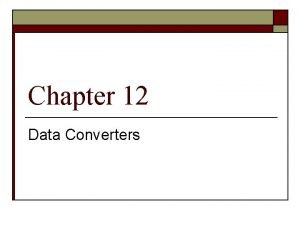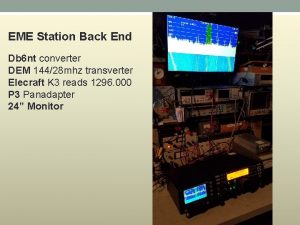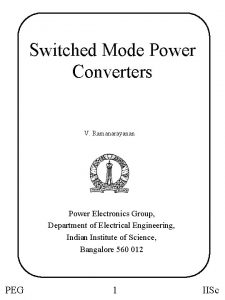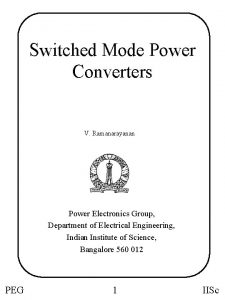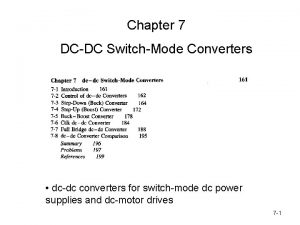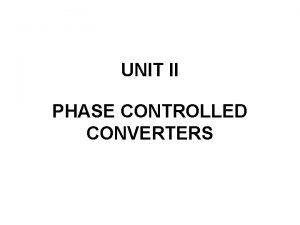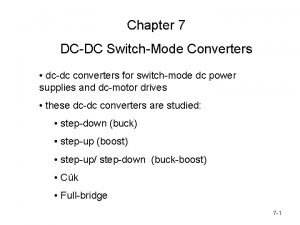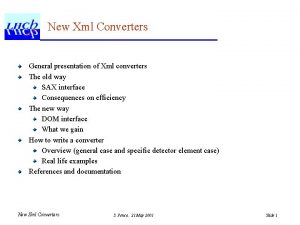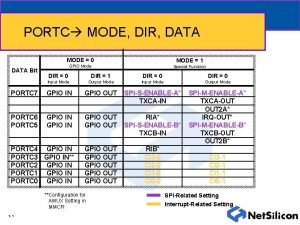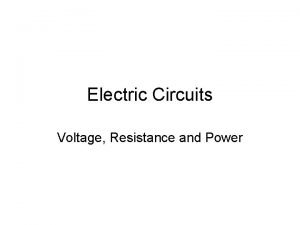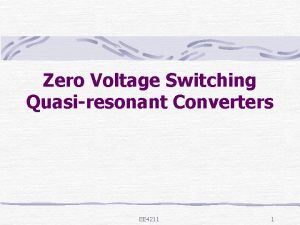Common Mode Voltage in Power Converters Definition of























- Slides: 23

Common Mode Voltage in Power Converters

Definition of common mode voltage • The CMV in power converter systems is defined in the same way as in electronics: the average of the voltage of each line with respect to the local common or ground. In a two-wire cable, a CMV appears on both lines, in-phase and with equal amplitudes.

Single phase bridge converter In power converter systems, the switching action of solid-state devices is a main source of CMVs. The CMV is defined with respect to the dc-link midpoint. With bipolar modulation that simultaneously turns on or off the diagonal switches (S 1 and S 2, S 3 and S 4), the CMV is always kept at zero. However, unipolar PWM generates a stepwise CMV waveform with the values of ±vdc/2 and 0.

Three-phase bridge converter • The CMVs are essentially zero-sequence components in three-phase systems and equal to zero with a balanced supply and load. This is different from the single-phase full-bridge converter. It could never be zero. Three-phase VSC’s CMV is defined by

If CMVs are not mitigated in a motor drive, they will appear on the neutral point of the stator windings with respect to the ground. The motor line-to-ground voltage, which is originally equal to the line-to-neutral (phase) voltage, can be substantially increased, leading to premature failure of the motor winding insulation system. As a result, the motor life expectancy is shortened.

The MV drives (2. 3 k. V– 13. 8 k. V) do not allow their motors to be subjected to any CMVs; otherwise replacement of damaged motors would be very costly in addition to causing loss of production. The CMV stress, on the other hand, is often neglected in lowvoltage (LV: ≤ 600 V) drives. The conservative insulation design of LV motors supports it. However, the other CMV issues induced via the parasitically capacitive couplings inside the motor, including the shaft voltage, ground and bearing currents, exist in both MV and LV drives, and can not be ignored.

CM-circuit model of a machine







Thyristor controlled rectifier


CMV for diode rectifier with capacitive load

CMV for thyristor rectifier with inductive load firing angle=60 degrees

Simplified circuit diagram of VSI-fed drives


VSI-fed motor drive with a diode-front end


Back-to-back PWM VSC-based motor drive

 Common mode voltage definition
Common mode voltage definition A mode b mode m mode
A mode b mode m mode Dcac converters
Dcac converters Types of adcs
Types of adcs Redox reaction in catalytic converters
Redox reaction in catalytic converters Flyback converter
Flyback converter Dcac converters
Dcac converters Digital to analog converters basic concepts
Digital to analog converters basic concepts Eme converter
Eme converter Single phase dual converter waveforms
Single phase dual converter waveforms Multiple output flyback converter
Multiple output flyback converter Intelligent converters
Intelligent converters Plt 403
Plt 403 Control of induction motor by ac voltage controllers
Control of induction motor by ac voltage controllers Line current and phase current
Line current and phase current Convert rms to peak voltage
Convert rms to peak voltage Step voltage and touch voltage
Step voltage and touch voltage Power triangle diagram
Power triangle diagram Focus mode and diffuse mode
Focus mode and diffuse mode Mode địa chỉ tức thì là mode
Mode địa chỉ tức thì là mode Real protected and virtual modes of 80386
Real protected and virtual modes of 80386 Operating modes of 8051
Operating modes of 8051 Gartner mode 1 mode 2
Gartner mode 1 mode 2 Perbedaan (planning mode) dan (evolutionary mode)
Perbedaan (planning mode) dan (evolutionary mode)
